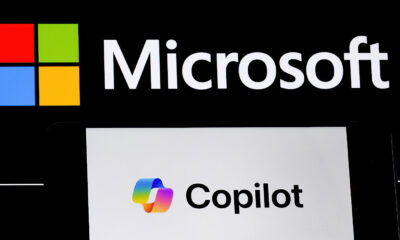SEO
What Is A Google Broad Core Algorithm Update?

When Google announces a broad core algorithm update, many SEO professionals find themselves asking what exactly changed (besides their rankings).
Google’s acknowledgment of core updates is always vague and doesn’t provide much detail other than to say the update occurred.
The SEO community is typically notified about core updates via the same standard tweets from Google’s Search Liaison.
There’s one announcement from Google when the update begins rolling out, and one on its conclusion, with few additional details in between (if any).
This invariably leaves SEO professionals and site owners asking many questions with respect to how their rankings were impacted by the core update.
To gain insight into what may have caused a site’s rankings to go up, down, or stay the same, it helps to understand what a broad core update is and how it differs from other types of algorithm updates.
After reading this article you’ll have a better idea of what a core update is designed to do, and how to recover from one if your rankings were impacted.
So, What Exactly Is A Core Update?
First, let me get the obligatory “Google makes hundreds of algorithm changes per year, often more than one per day” boilerplate out of the way.
Many of the named updates we hear about (Penguin, Panda, Pigeon, Fred, etc.) are implemented to address specific faults or issues in Google’s algorithms.
In the case of Penguin, it was link spam; in the case of Pigeon, it was local SEO spam.
They all had a specific purpose.
In these cases, Google (sometimes reluctantly) informed us what they were trying to accomplish or prevent with the algorithm update, and we were able to go back and remedy our sites.
A core update is different.
The way I understand it, a core update is a tweak or change to the main search algorithm itself.
You know, the one that has between 200 and 500 ranking factors and signals (depending on which SEO blog you’re reading today).
What a core update means to me is that Google slightly tweaked the importance, order, weights, or values of these signals.
Because of that, they can’t come right out and tell us what changed without revealing the secret sauce.
The simplest way to visualize this would be to imagine 200 factors listed in order of importance.
Now imagine Google changing the order of 42 of those 200 factors.
Rankings would change, but it would be a combination of many things, not due to one specific factor or cause.
Obviously, it isn’t that simple, but that’s a good way to think about a core update.
Here’s a purely made up, slightly more complicated example of what Google wouldn’t tell us:
“In this core update, we increased the value of keywords in H1 tags by 2%, increased the value of HTTPS by 18%, decreased the value of keyword in title tag by 9%, changed the D value in our PageRank calculation from .85 to .70, and started using a TF-iDUF retrieval method for logged in users instead of the traditional TF-PDF method.”
(I swear these are real things. I just have no idea if they’re real things used by Google.)
For starters, many SEO pros wouldn’t understand it.
Basically, it means Google may have changed the way they calculate term importance on a page, or the weighing of links in PageRank, or both, or a whole bunch of other factors that they can’t talk about (without giving away the algorithm).
Put simply: Google changed the weight and importance of many ranking factors.
That’s the simple explanation.
At its most complex form, Google ran a new training set through their machine learning ranking model and quality raters picked this new set of results as more relevant than the previous set, and the engineers have no idea what weights changed or how they changed because that’s just how machine learning works.
(We all know Google uses quality raters to rate search results. These ratings are how they choose one algorithm change over another – not how they rate your site. Whether they feed this into machine learning is anybody’s guess. But it’s one possibility.)
It’s likely some random combination of weighting delivered more relevant results for the quality raters, so they tested it more, the test results confirmed it, and they pushed it live.
How Can You Recover From A Core Update?
Unlike a major named update that targeted specific things, a core update may tweak the values of everything.
Because websites are weighted against other websites relevant to your query (engineers call this a corpus) the reason your site dropped could be entirely different than the reason somebody else’s increased or decreased in rankings.
To put it simply, Google isn’t telling you how to “recover” because it’s likely a different answer for every website and query.
It all depends on what everybody else trying to rank for your query is doing.
Does every one of them but you have their keyword in the H1 tag? If so then that could be a contributing factor.
Do you all do that already? Then that probably carries less weight for that corpus of results.
It’s very likely that this algorithm update didn’t “penalize” you for something at all. It most likely just rewarded another site more for something else.
Maybe you were killing it with internal anchor text and they were doing a great job of formatting content to match user intent – and Google shifted the weights so that content formatting was slightly higher and internal anchor text was slightly lower.
(Again, hypothetical examples here.)
In reality, it was probably several minor tweaks that, when combined, tipped the scales slightly in favor of one site or another (think of our reordered list here).
Finding that “something else” that is helping your competitors isn’t easy – but it’s what keeps SEO professionals in the business.
Next Steps And Action Items
Rankings are down after a core update – now what?
Your next step is to gather intel on the pages that are ranking where your site used to be.
Conduct a SERP analysis to find positive correlations between pages that are ranking higher for queries where your site is now lower.
Try not to overanalyze the technical details, such as how fast each page loads or what their core web vitals scores are.
Pay attention to the content itself. As you go through it, ask yourself questions like:
- Does it provide a better answer to the query than your article?
- Does the content contain more recent data and current stats than yours?
- Are there pictures and videos that help bring the content to life for the reader?
Google aims to serve content that provides the best and most complete answers to searchers’ queries. Relevance is the one ranking factor that will always win out over all others.
Take an honest look at your content to see if it’s as relevant today as it was prior to the core algorithm update.
From there you’ll have an idea of what needs improvement.
The best advice for conquering core updates?
Keep focusing on:
- User intent.
- Quality content.
- Clean architecture.
- Google’s guidelines.
Finally, don’t stop improving your site once you reach Position 1, because the site in Position 2 isn’t going to stop.
Yeah, I know, it’s not the answer anybody wants and it sounds like Google propaganda. I swear it’s not.
It’s just the reality of what a core update is.
Nobody said SEO was easy.
More resources:
Featured Image: Ulvur/Shutterstock



















You must be logged in to post a comment Login